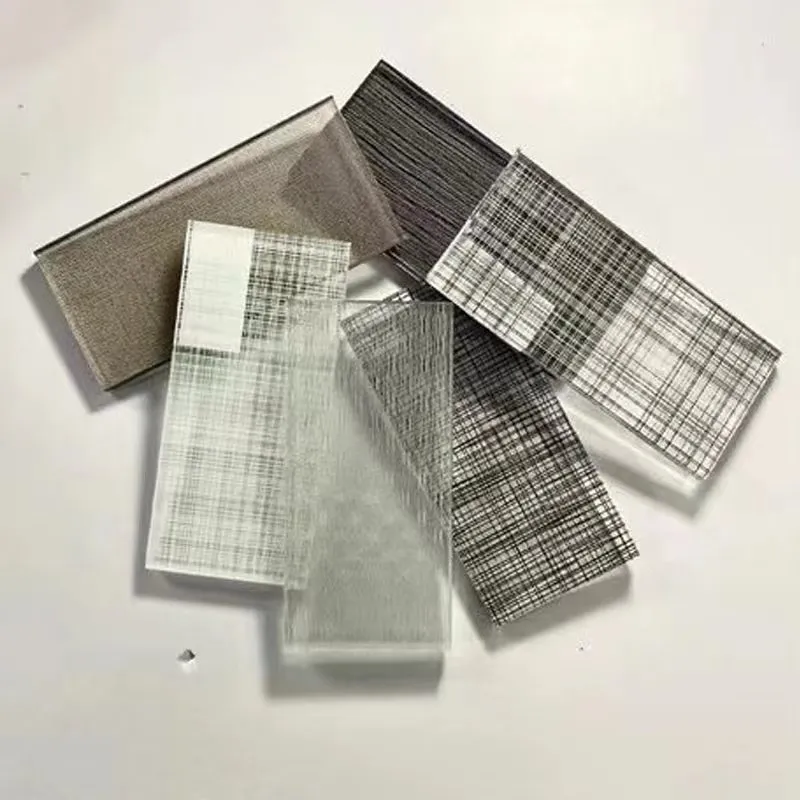The Versatility and Aesthetics of Grey Float Glass
Grey float glass has emerged as a popular choice in contemporary architecture and interior design, renowned for its unique aesthetic appeal and practical applications. This type of glass is produced through the float glass process, where molten glass is floated on a bed of molten tin, resulting in a smooth, flat, and uniformly thick sheet. The addition of iron oxide gives grey float glass its characteristic hue, making it a versatile material in various design contexts.
One of the primary attractions of grey float glass is its ability to diffuse light while providing a degree of privacy. This makes it an ideal choice for both residential and commercial spaces. By allowing natural light to penetrate while obscuring visibility from the outside, grey float glass strikes a balance between openness and seclusion. This feature is particularly desirable in settings such as office buildings, conference rooms, and modern homes, where maintaining a bright environment without sacrificing privacy is crucial.
Moreover, grey float glass is often used in combination with other materials, enhancing its aesthetic versatility. It pairs beautifully with wood, metal, and stone, making it suitable for a wide range of design styles, from industrial to minimalist. Designers and architects appreciate the subtle elegance that grey float glass brings to projects, whether it's used in large storefront windows, glass partitions, or decorative panels.
grey float glass
In recent years, the demand for sustainable building materials has increased, and grey float glass meets many eco-friendly criteria. It can be manufactured using recycled materials and is fully recyclable at the end of its life cycle. Additionally, grey float glass can be treated with various coatings to improve energy efficiency, such as low-emissivity (Low-E) coatings that reduce heat transfer while allowing maximum natural light to enter a space. This contributes to lower energy consumption for heating and cooling, making it a responsible choice for environmentally conscious builders and homeowners.
In terms of maintenance, grey float glass is relatively easy to care for. Its non-porous surface resists staining, and regular cleaning with mild detergents is typically sufficient to keep it looking pristine. This durability adds to its appeal, especially for high-traffic areas where regular wear and tear are concerns.
In conclusion, grey float glass is a remarkable material that combines beauty and functionality. Its ability to provide light diffusion, privacy, and aesthetic flexibility, along with its sustainability and ease of maintenance, makes it an excellent choice for modern design. As architects and designers continue to explore innovative ways to incorporate this material into their projects, grey float glass will undoubtedly remain a staple in contemporary architecture, shaping the spaces we live and work in today.
 Afrikaans
Afrikaans  Albanian
Albanian  Amharic
Amharic  Arabic
Arabic  Armenian
Armenian  Azerbaijani
Azerbaijani  Basque
Basque  Belarusian
Belarusian  Bengali
Bengali  Bosnian
Bosnian  Bulgarian
Bulgarian  Catalan
Catalan  Cebuano
Cebuano  Corsican
Corsican  Croatian
Croatian  Czech
Czech  Danish
Danish  Dutch
Dutch  English
English  Esperanto
Esperanto  Estonian
Estonian  Finnish
Finnish  French
French  Frisian
Frisian  Galician
Galician  Georgian
Georgian  German
German  Greek
Greek  Gujarati
Gujarati  Haitian Creole
Haitian Creole  hausa
hausa  hawaiian
hawaiian  Hebrew
Hebrew  Hindi
Hindi  Miao
Miao  Hungarian
Hungarian  Icelandic
Icelandic  igbo
igbo  Indonesian
Indonesian  irish
irish  Italian
Italian  Japanese
Japanese  Javanese
Javanese  Kannada
Kannada  kazakh
kazakh  Khmer
Khmer  Rwandese
Rwandese  Korean
Korean  Kurdish
Kurdish  Kyrgyz
Kyrgyz  Lao
Lao  Latin
Latin  Latvian
Latvian  Lithuanian
Lithuanian  Luxembourgish
Luxembourgish  Macedonian
Macedonian  Malgashi
Malgashi  Malay
Malay  Malayalam
Malayalam  Maltese
Maltese  Maori
Maori  Marathi
Marathi  Mongolian
Mongolian  Myanmar
Myanmar  Nepali
Nepali  Norwegian
Norwegian  Norwegian
Norwegian  Occitan
Occitan  Pashto
Pashto  Persian
Persian  Polish
Polish  Portuguese
Portuguese  Punjabi
Punjabi  Romanian
Romanian  Russian
Russian  Samoan
Samoan  Scottish Gaelic
Scottish Gaelic  Serbian
Serbian  Sesotho
Sesotho  Shona
Shona  Sindhi
Sindhi  Sinhala
Sinhala  Slovak
Slovak  Slovenian
Slovenian  Somali
Somali  Spanish
Spanish  Sundanese
Sundanese  Swahili
Swahili  Swedish
Swedish  Tagalog
Tagalog  Tajik
Tajik  Tamil
Tamil  Tatar
Tatar  Telugu
Telugu  Thai
Thai  Turkish
Turkish  Turkmen
Turkmen  Ukrainian
Ukrainian  Urdu
Urdu  Uighur
Uighur  Uzbek
Uzbek  Vietnamese
Vietnamese  Welsh
Welsh  Bantu
Bantu  Yiddish
Yiddish  Yoruba
Yoruba  Zulu
Zulu 

